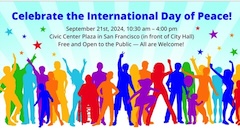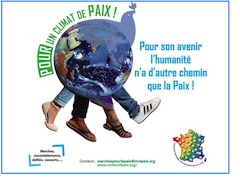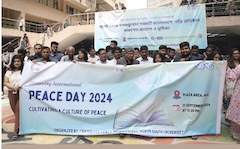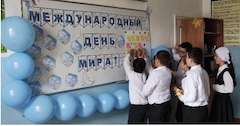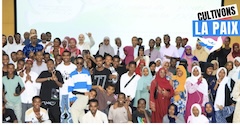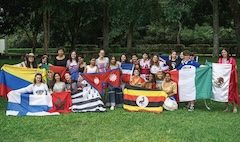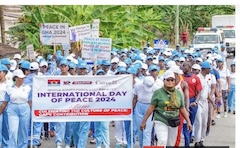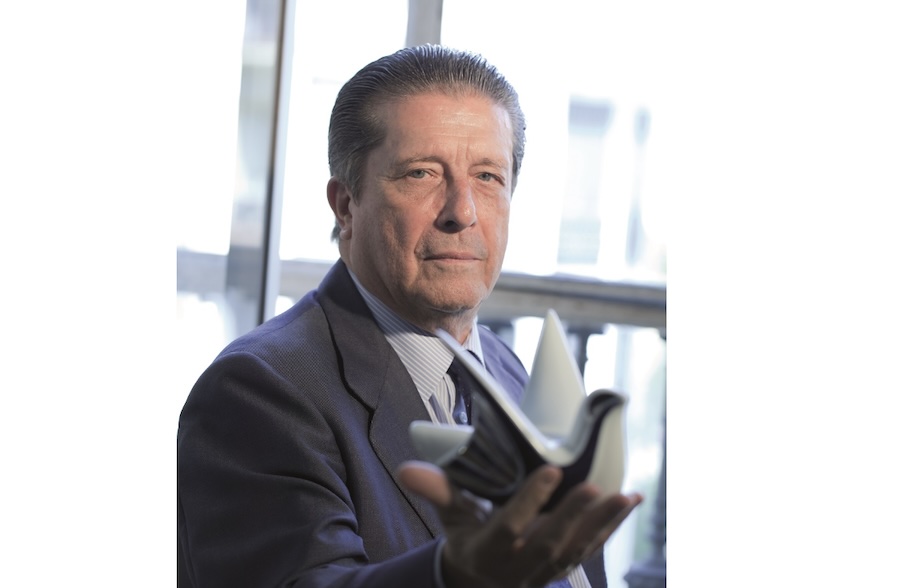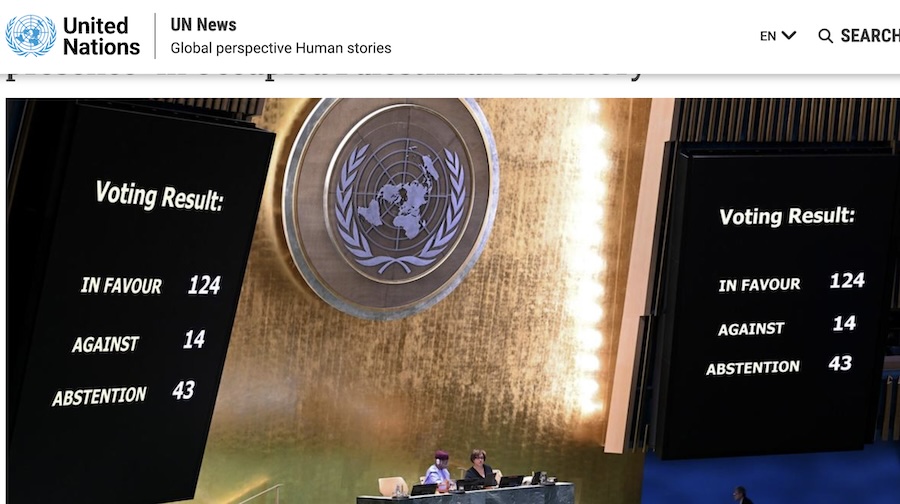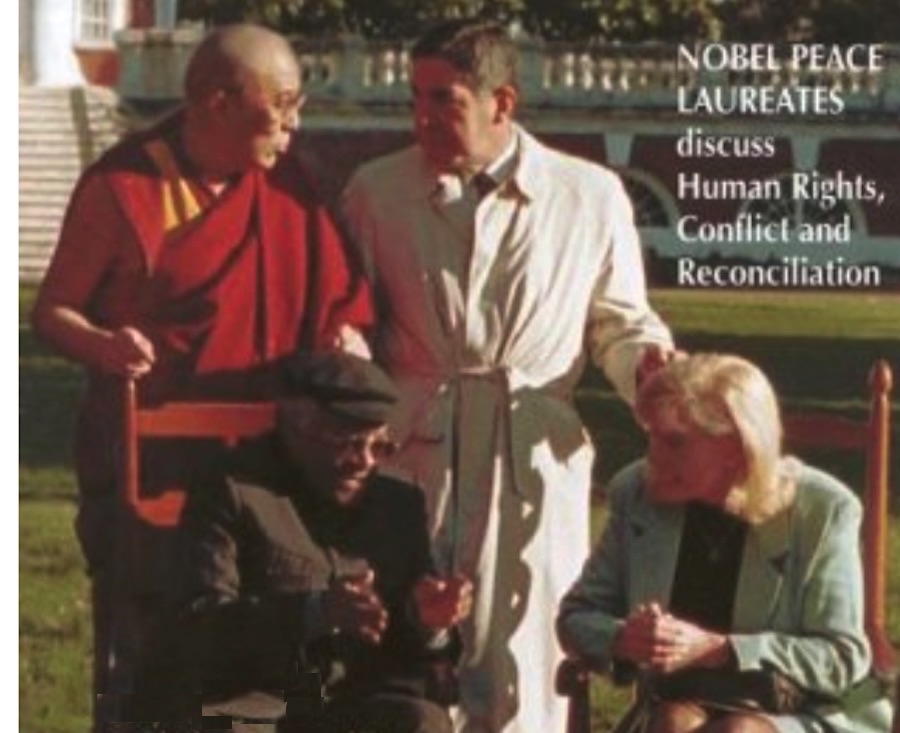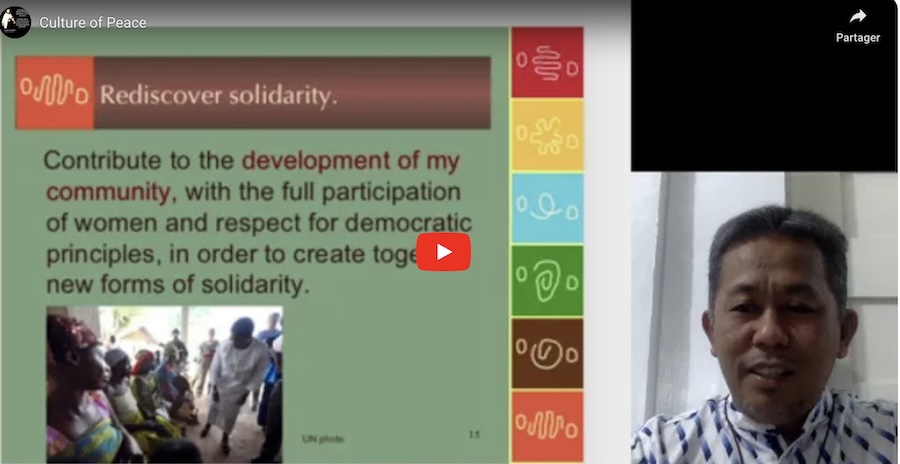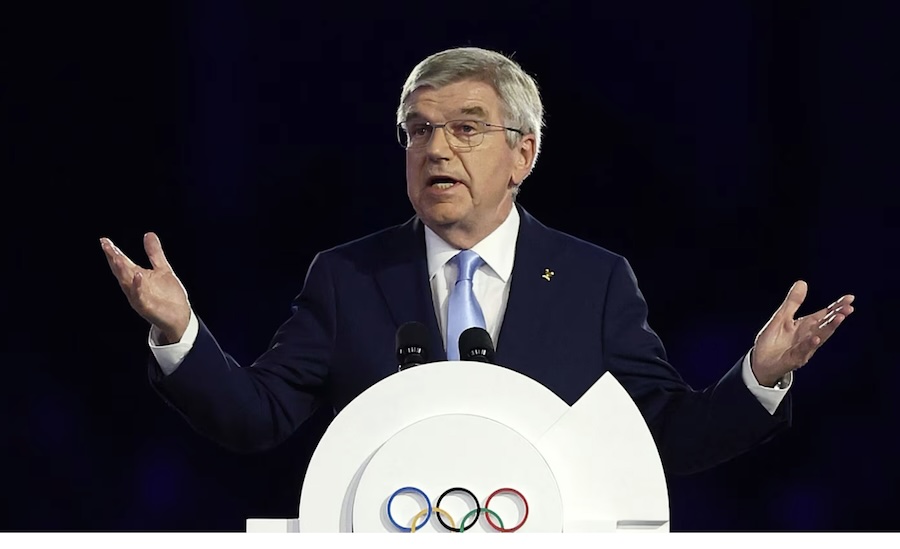DISARMAMENT & SECURITY .
An article by Joseph Gerson from Common Dreams
The Nobel Peace Prize awarded to Nihon Hidankyo is long overdue and could not come at a more important time.
The Hibakusha (A-bomb witness/survivors) of Nihon Hidankyo have been among the world’s most courageous and steadfast advocates of nuclear disarmament. The organization has focused on three core demands: Preventing nuclear war, eliminating nuclear weapons, and obtaining essential medical care for A-bomb victims.

Members of Nihon Hidankyo, a grassroots Japanese organization of atomic bomb survivors from Hiroshima and Nagasaki attend a press conference on October 12, 2024 in Tokyo, Japan. (Photo: Tomohiro Ohsumi/Getty Images)
Hidankyo was founded in 1956, in the wake of the Bravo H-Bomb test 1,000 times more powerful that the Hiroshima A-bomb, which poisoned Japanese fishermen and Marshall Islanders.
As Wilfred Burchett, the first Western journalist to witness the ruins and suffering in Hiroshima in 1945 later reported, despite their excruciating physical and emotional suffering, the Hibakusha became the world’s most powerful and influential force for the abolition. With the award of the Nobel Peace Prize, the voices of the Hibakusha, their tortured testimonies, and their truth that human beings and nuclear weapons cannot coexist will now ring out more powerfully around the world.
Nihon Hidankyo was repeatedly nominated for its now well-earned Peace Prize, and the Nobel Committee is now to be celebrated for finally making this year’s decision. With the world, our species, facing the greatest danger of nuclear apocalypse since the 1962 Cuban Missile Crisis, this year’s Peace Prize will refocus world attention on the urgency of renewing nuclear disarmament diplomacy. In addition to Russian nuclear threats related to the continuing Ukraine War, an accident, incident, or miscalculation growing out of provocative U.S., allied, and Chinese military operations in and around the Taiwan Strait and the South China/West could ignite escalation to a nuclear cataclysm.
With uncertainties about a possible Trump election victory, there are growing demands among Japanese and South Korean elites for their nations to become nuclear powers. The U.S. and Russia have lowered their official operational thresholds for launching their nuclear weapons. All of the nuclear weapons states are upgrading their nuclear arsenals and delivery systems, with the U.S. committing an estimated two trillion dollars to “modernize” its systems when that money could be spent to stanch and reverse the climate emergency and to address other urgent human needs.
Let us marvel and learn from the reality that Hibakusha, who were literally the last people on earth, once seen by U.S. leaders and media as “vermin” to be eliminated, have awakened the conscience of the world after suffering what was probably the world’s worst war crime. And contrary to the myth propagated by President Truman, the A-bombs were not necessary to defeat Japan. Senior U.S. military officials from Eisenhower to LeMay and Leahy advised the president that “it wasn’t necessary to hit Japan with that awful thing” Secretary of War Stimson had already advised that Japan’s surrender on terms acceptable to the U.S. could be negotiated.”
Hibakusha’s friends, families and neighbors were incinerated, irradiated, and physically ripped apart by the radiation’s heat and blast waves of the world’s first A-bombs. An entire city was destroyed and burned to the ground. Midst their own agonies, Many Hibakusha were unable to save their families in their shattered and burning homes. They witnessed ghostlike figures, no longer recognizable as human beings, some holding their eyeballs or intestines in their hands marching to their deaths, often in cisterns or the city’s rivers. In the months and years that followed, many died from radiation inflicted cancers and other diseases. Memories remain of the birthing of mutant babies and of other young children whose lives were cut short by radiation diseases.
(Continued in right column)
(Click here for an article in French on this subject.)
Can we abolish all nuclear weapons?
(Continued from left column)
With initial fears that the radiation diseases might be contagious and about genetic damages, Hibakusha’s suffering was compounded by marginalization and discrimination. As a result of the U.S. military occupation which continued until 1952 and subsequently with Japan functioning as the United States’ subservient ally, essential medical and other support services were long denied to Hibakusha.
Among the achievements of Nihon Hidankyo and its allies are the collaborations they have built with other “global hibakusha.” These included forced laborers who had brought from Japanese occupied Korea who also suffered the A-bombings. Compassionately and strategically they supported and joined with nuclear weapons test victims from the Marshall Islands, the United States, Russia, Kazakhstan, Tahiti, the Christmas Islands, and other Pacific Islands.
Together with their testimonies in communities across the world and in the United Nations they forged the powerful but still inadequate taboo against the use of nuclear weapons. With their testimonies at the U.N. and elsewhere they have won the majority of the world’s governments to the understanding that for the human species to survive, priority must be given to the humanitarian consequences of nuclear weapons, not so-called “state security” interests. Hibakusha’s testimonies were essential to the successful negotiation of the Treaty on Prohibition of Nuclear Weapons which seeks to hold the nuclear weapons states accountable to their Article VI Nuclear Nonproliferation Treaty obligation to engage in good faith negotiations for the complete abolition of nuclear weapons.
That nuclear weapons have not been used since the Nagasaki A-bombing was an unfortunate misstatement in the Nobel Peace Prize Committee’s award announcement. As Daniel Ellsberg, a principal author of the United States’ nuclear war planning in the Kennedy administration. taught during many international crises and wars, the U.S. has used its nuclear arsenal in the same way that an armed robber uses his gun when pointed at his victim’s head. Whether or not the trigger is pulled, the gun has been used. Tragically, this is playbook with which the Russian government has been working from with its Ukraine-war nuclear threats.
It is worth noting that in response to the announcement of the award, Hidankyo referenced the terrible assaults on the people of Gaza. The Hibakusha have identified with victims of other holocausts and massacres going back to Vietnam when they identified with the people under the bombs. They then warned of the danger that the U.S. might resort to nuclear attack (which the U.S. prepared and threatened in 1954, 1957 and with President Nixon’s 1969 “madman” nuclear mobilization.
Numerous popular initiatives are at work in the world which will be boosted by the Peace Prize award to Nihon Hibakusha. In the U.S., the Back from the Brink campaign, initiated by Physicians for Social Responsibility, has been at the cutting edge. It’s call for negotiation of a verifiable agreement to eliminate nuclear weapons, renunciation of first-use policies, ending the president’s sole authority to launch nuclear weapons, taking U.S. nuclear weapons off hair-trigger alert, and to cancel the plan to replace the entire U.S. nuclear arsenal with enhanced weapons has been endorsed by 43 members of congress and numerous U.S. cities and states.
The Campaign for Peace, Disarmament and Common Security works to prevent nuclear war and achieve a nuclear weapons-free world via its advocacy of Common Security. This is the ancient truth that no nation can achieve security at the expense of its rival. As with the INF Treaty that ended the Cold War before the fall of the Cold War, peaceful coexistence and security can be achieved only through mutual recognition, and respectful, if difficult, win-win negotiations between rivals.
In the face of the horrors on nuclear weapons and drawing on the courage of Hibakusha, this is the paradigm on which the Hibakusha’s vison of a nuclear weapons free world can be achieved.
– – – – – –
If you wish to make a comment on this article, you may write to coordinator@cpnn-world.org with the title “Comment on (name of article)” and we will put your comment on line. Because of the flood of spam, we have discontinued the direct application of comments.

